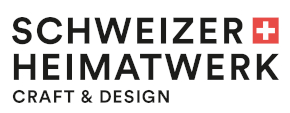Poster A1 Oberer Letten Zurich by Dylan Moore
Mid-jump, arms wide open – as if she wanted to embrace summer. The poster for Fabrikat, designed by Dylan Moore and the Designers` Club, depicts a moment of lightness in Zurich`s iconic Oberer Letten river pool. The scene in front of the diving tower is reminiscent of hot afternoons by the water, of architecture steeped in history – and of how Zurich continually reinvents itself.
The Oberer Letten is no ordinary outdoor pool. Zurich residents have been swimming here since around 1900 – back then in a wooden river pool. But in 1951, an engineering intervention changed everything: The Platzspitz weir raised the water level, and the old pool had to be demolished. What emerged in 1952 is a piece of progress made of concrete: Designed by Elsa Burckhardt-Blum, the new pool embodies beautifully designed modernism – functional, reduced, hygienic, and with architectural accents such as the wing-like staircase.
The diving platform, featured in the poster, connects the changing rooms to the large sun terrace with a kiosk—the social hub on hot days. A separate sun terrace for women only was almost revolutionary at the time. Today, the facility is a listed building and a reminder that even sober concrete architecture can be poetic.
The four-color screen print was created by Chris Hart in Zurich.
The Oberer Letten is no ordinary outdoor pool. Zurich residents have been swimming here since around 1900 – back then in a wooden river pool. But in 1951, an engineering intervention changed everything: The Platzspitz weir raised the water level, and the old pool had to be demolished. What emerged in 1952 is a piece of progress made of concrete: Designed by Elsa Burckhardt-Blum, the new pool embodies beautifully designed modernism – functional, reduced, hygienic, and with architectural accents such as the wing-like staircase.
The diving platform, featured in the poster, connects the changing rooms to the large sun terrace with a kiosk—the social hub on hot days. A separate sun terrace for women only was almost revolutionary at the time. Today, the facility is a listed building and a reminder that even sober concrete architecture can be poetic.
The four-color screen print was created by Chris Hart in Zurich.

